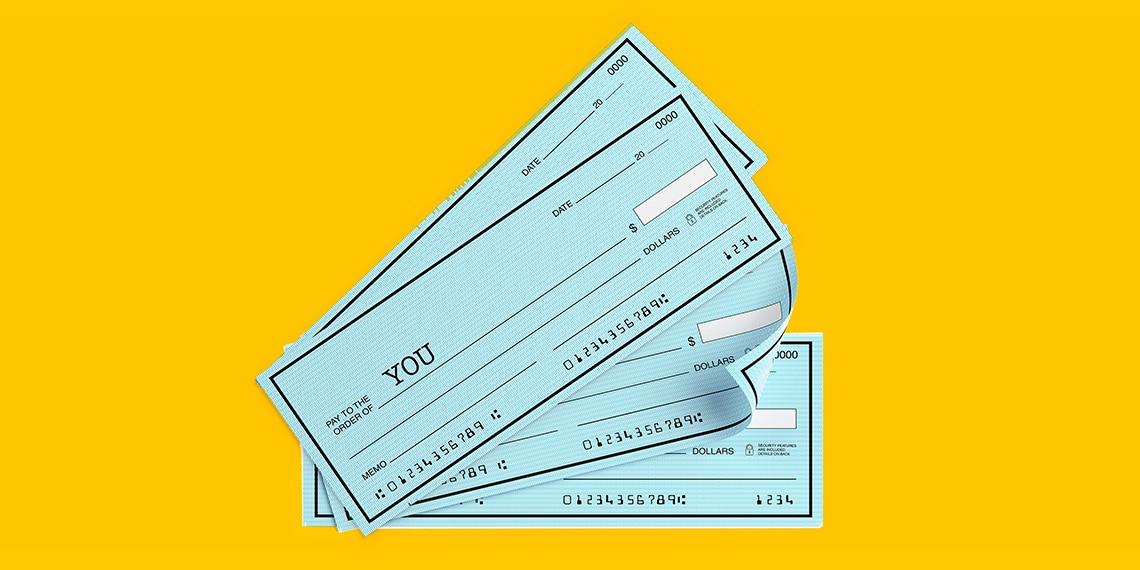
With the economic upheaval caused by the coronavirus shutdown, tens of millions of people have lost their jobs or become underemployed. That’s the perfect scenario where having a cushion of a few months of emergency savings would really come in handy.
But, like more than three-quarters of American workers, many of these people live paycheck to paycheck. That means they have barely enough money coming in—and little savings—to cover expenses each month. Without a deeper financial cushion to protect themselves, many people are a single emergency away from sliding into a financial hole. Plus the ongoing stress of not being financially secure can affect both physical and emotional health.
The good news: There are simple steps you can take to break out of the paycheck-to-paycheck bind. It may take time and effort, but you can do it.
1
Step 1: Track Spending
This is simple but effective. The basics of budgeting begin with knowing how much you spend and earn. From there, you can make conscious, trackable changes in your personal finances that can put you on higher and safer ground.
2
Step 2: Identify Must-Have vs. Nice-to-Have Expenses
This is a classic step in deciding what you can do without. Once you see where you’re spending your money each month, categorize every purchase, assess your true needs and decide what regular small or medium-sized expenses you could cut back on fairly painlessly.
3
Step 3: Cut Nonessentials
Trim around the edges of your budget. What regular expenses could you cut back on? If you can identify a few things that are not true essentials, you’ll be on the right track and you might not even miss them. Remember that the cuts don’t need to be huge amounts.
For example, could you pass on certain more expensive grocery items? Comparison shop with an eye on price? Have fewer meals out? That shouldn’t be too hard with an increased stay-at-home focus these days. Similarly, you could trim entertainment expenses. Don’t deny yourself fun, but perhaps use more discretion. And consider less expensive ways to spend your leisure time.
Magazine subscriptions or club memberships that you don’t use much are other opportunities to save quickly. As an alternative, you could shift to exercising outdoors more. Taking a less expensive family vacation for a year or two could also add to your savings account.
4
Step 4: Can You Downsize?
For a bigger payoff in savings, review your major expenses. In your monthly budget, housing is surely a big item. To make a big financial move, you just might want to move, literally.
How do you fare on the rule of thumb that says that your housing expenses shouldn’t make up more than 28% of your gross income? If you rent, add up your monthly rent and any association fees, if in a condo, plus apartment or home insurance. If you own, tally your mortgage, property tax and home insurance. If they add up to more than 28% of your income before taxes and deductions, think of downsizing.
Even if they are within that threshold, consider whether you could move to a smaller or less expensive place. Another option for a renter is to get a roommate; for a homeowner, could you rent a spare room?
Unless you’ve paid off your mortgage, housing is likely your biggest monthly expense. But there are other major costs. How much are you paying for your car? Could you drive a less expensive vehicle? If you pay a lot for health insurance, could you lower your monthly premium by shifting to a higher deductible?
5
Step 5: Could You Earn More?
In addition to—or instead of—cutting back on expenses, could you earn more money? There are a number of ways. You might try negotiating a raise at your current job or work additional hours. Find a part-time additional gig or look for a higher paying job. This step can be the most difficult, so if you can’t make more money, focus your energy on saving the money you are earning.
6
Step 6: Make It Easy to Save
Two great ways to make it really easy to save each month or each paycheck are to pay yourself first and to automate your savings. Paying yourself first simply means committing to save a certain amount every paycheck or every month before you spend any money anywhere else. And you can make that easy by automating your savings. You won’t even see that money because it will go straight into your designated savings account.
If you do well with peer support, you could arrange with someone to hold you accountable. You could report in to that person each month with a progress report and get a pat on the back or a high five!
7
Step 7: Once You Start, Don’t Stop
If you can be easily tempted to make withdrawals, make that harder to do by creating a separate account with a different financial institution than your main one. You could also “lock up” some money for a period in something like a three-month or six-month certificate of deposit.
There you have it: seven steps to getting out of the paycheck-to-paycheck bind. You can make it happen. Start this month!
Allan Kunigis is a financial freelance writer based in Shelburne, VT. He has written about personal finance for more than two decades.
What are you saving for? Use our calculator to figure out how to reach your goal.

